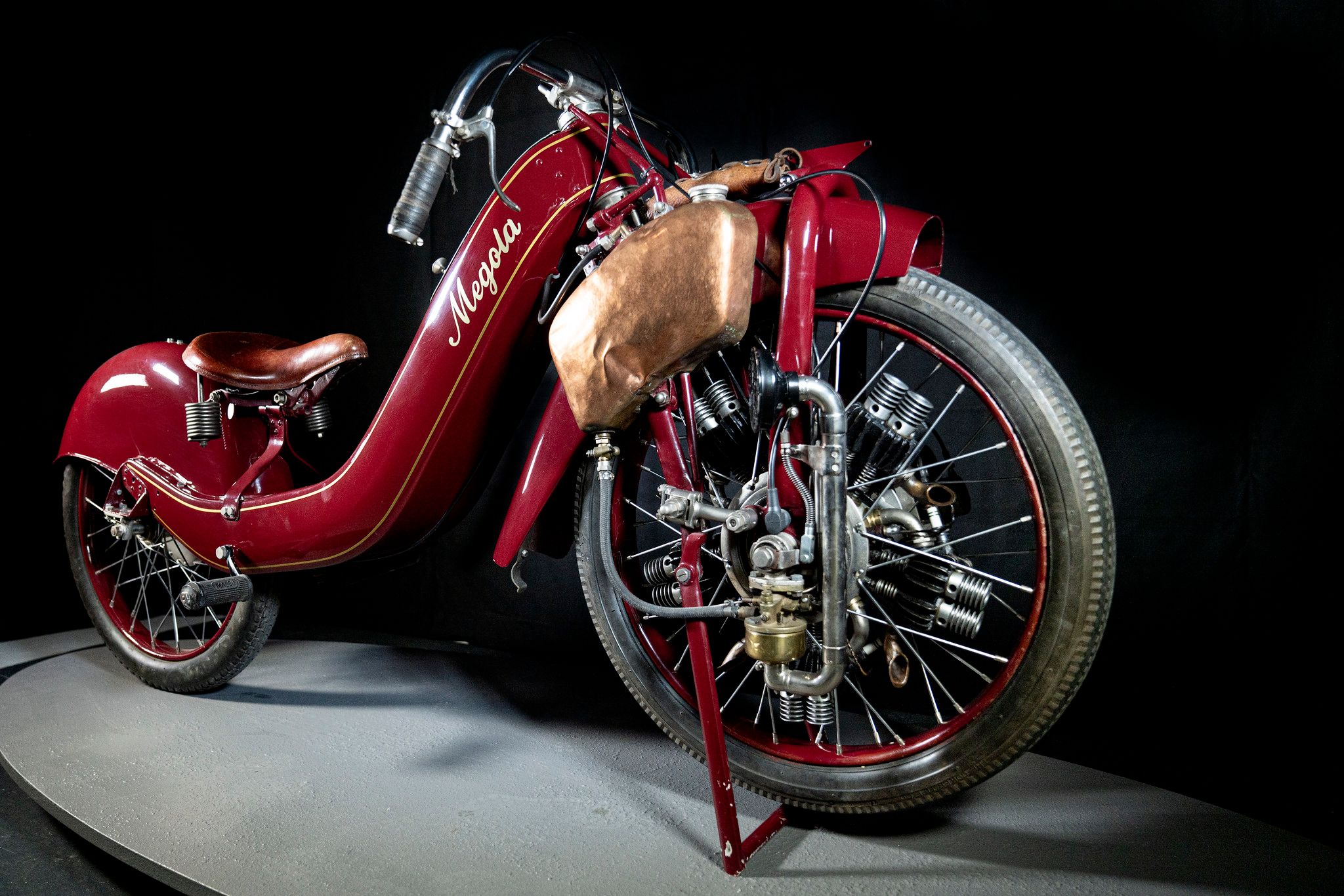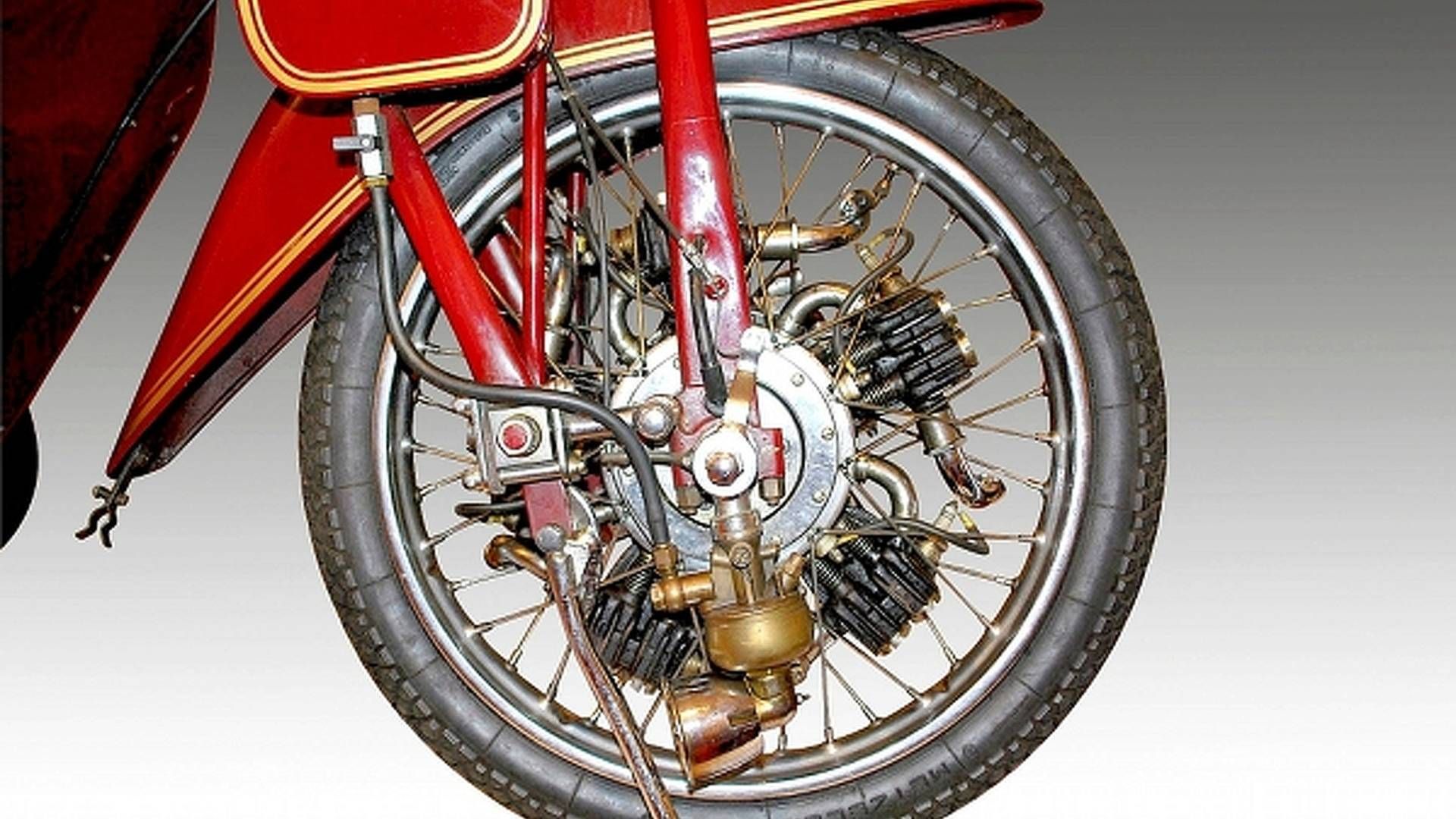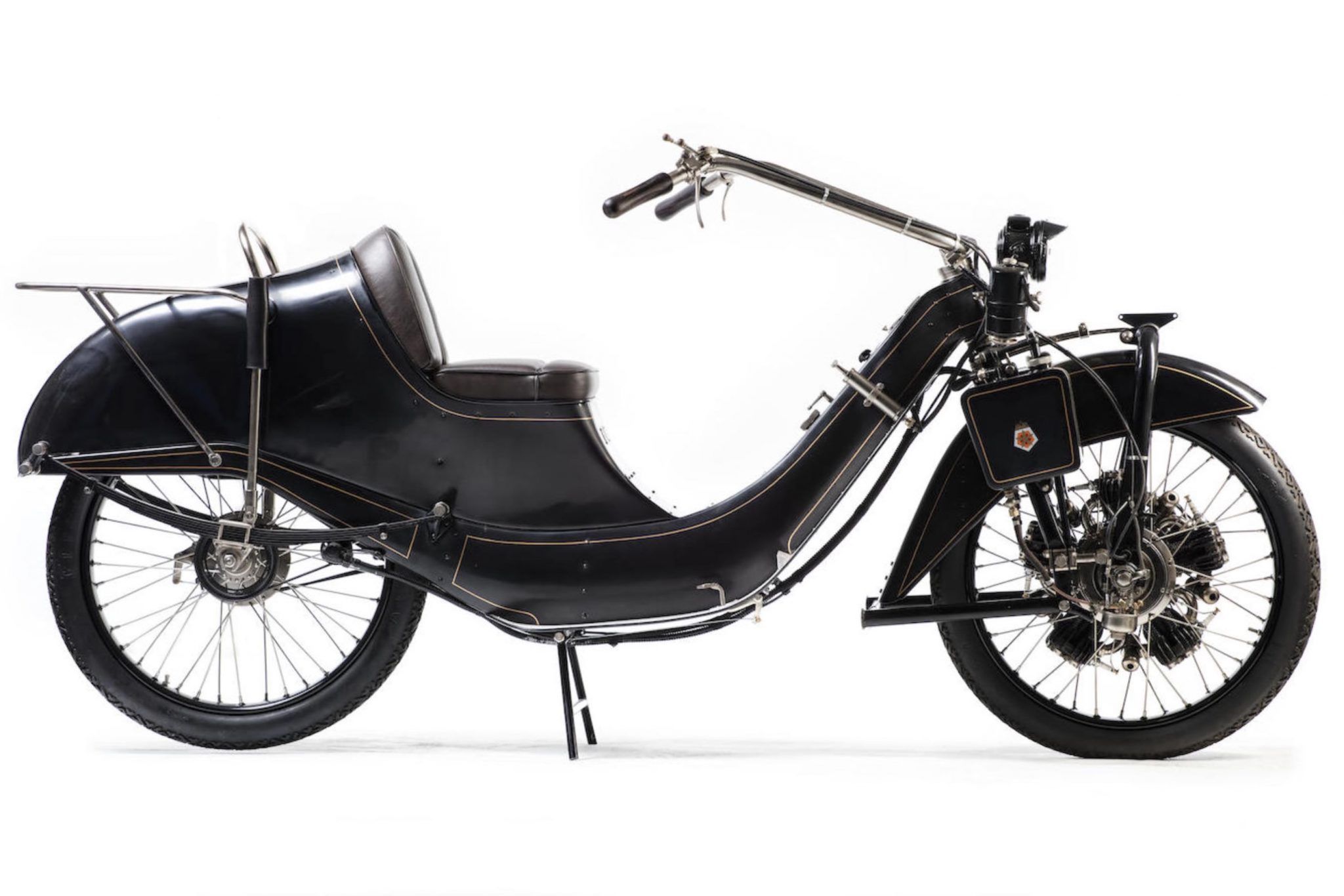You have to love pioneer motorcycling engineers for the crazy ideas they sometimes came up with. Before the motorcycle took the form it has today, many blind alleys were headed down with a persistence that was remarkable. One of the most bizarre was the Megola, with a radial five-cylinder engine mounted to the hub of the front wheel. It can't have been as mad as we think as 2,000 were sold in the 1920s.
Locating the Engine? I Know, Inside the Front Wheel is as good as anywhere!
The Megola was a German-designed and built motorcycle from the early 1920s. The name derives loosely from the names of the three designers, Meixner, Cockerell, and Landgraf.
Fritz Cockerell came up with the design in 1920. Quite why he thought that placing a rotary engine within the front wheel was a good idea is not actually recorded anywhere, sadly. Actually, the prototype had the engine mounted in the rear wheel so the question of why put it in the front wheel is even more confusing.
The fact that he chose a rotary engine is not all that unusual when you consider that many aircraft during the first world war were powered by such engines, even though, by the early 1920s, the drawbacks of the design meant that the configuration was about to become obsolete and would eventually be phased out for aircraft.
Nor was Cockerell the first to put a rotary engine within the wheel. Frenchman Félix Millet showed a 5-cylinder rotary engine built into a bicycle wheel at the Exposition Universelle in Paris in 1889. Millet had patented the engine in 1888, so must be considered the pioneer of the internal combustion rotary engine. A machine powered by his engine took part in the Paris-Bordeaux-Paris race of 1895.
The engine in the Megola comprised five cylinders of 128cc each, giving an overall capacity of 640cc. Valves were mounted at the side of each cylinder and 14hp was produced at 3,000rpm. The engine rotated forward within the wheel, while the crankshaft, which operated the valve gear, rotated backwards. At peak engine revs of 3,600rpm, the wheel was turning at 600rpm, giving a top speed of 60km/h, not bad for the day. And if you’re trying to work out how the motion of the engine was converted to a forward rotating wheel with a backward rotating crankshaft, then you’re not alone; I also can’t get my head around it!
Fuel was fed to the cylinders via a butterfly in the hollow crankshaft and the carburettor was fed by gravity from a small petrol tank mounted directly above it, this tank being fed by a manual pump from a larger tank in the bodywork.
The siting of the engine made for a very low centre of gravity which, by all accounts, gave excellent handling. Quite how the gyroscopic effect of all that rotating mass affected steering can only be guessed at.
There was no clutch or gearbox so the engine had to be started either by spinning the front wheel or push-starting. However, the lack of a clutch meant the engine had to be stopped when the motorcycle was stationary. As an alternative, the owner's manual suggested the rider “make small orbits in the road” if at any point they had to halt. Yeah, that would work - riding in circles waiting for the lights to change!
Because the front wheel was rather full, the Megola had twin independent brakes on the rear wheel. It was also well-equipped for its day, with a fuel gauge, tachometer and ammeter as standard equipment.
It was an amazing age for lateral thinking in transport engineering and so, at the time, perhaps the Megola didn’t raise as many eyebrows as it would today. In just under five years of production, some 2000 were sold and it would possibly have continued in production had it not been for Germany’s rampant inflation and economic instability. Sadly, only around 15 survive today.




